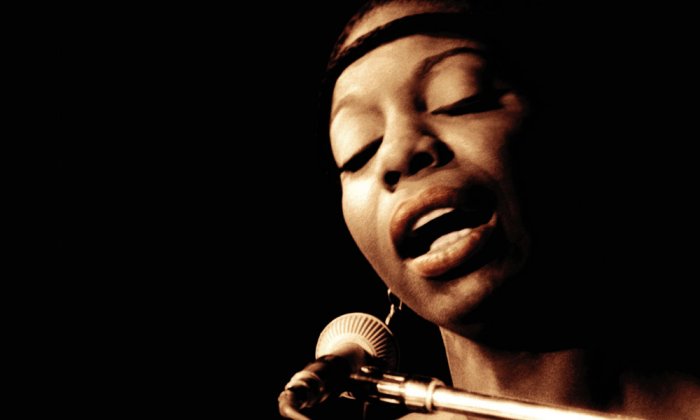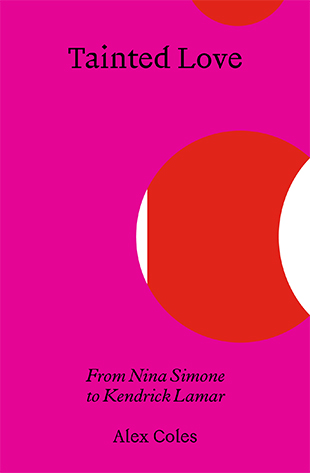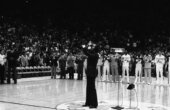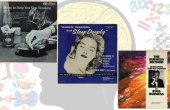Tainted Love: On Nina Simone’s ‘Baltimore’

“Baltimore” is unique in my book “Tainted Love” — an inquiry into the twisted romantic ballad — for being one of only two songs included that was not composed by its performer. Where Randy Newman’s original 1977 recording is a dispassionate comment on Baltimore, Nina Simone’s version from a year later infuses the song with a heightened degree of emotional empathy. Simone’s “Baltimore” is a paean to a city with deep personal and political significance. “Nina had a way of taking a piece of music and not interpreting it,” says Simone’s long-term guitarist Al Schackman in Alan Light’s biography of the artist, but “morphing it into her own experience.” This is precisely what Simone does on “Baltimore,” turning it into a love song to a city experiencing rapid, racialized socioeconomic decline.

Simone introduces an abrupt change in vocal texture at a crucial moment in the song’s chorus — a technique the singer refers to as a “razor cut” — to convey her empathy with the plight of the city. This move is the key sonic element that turns this love song into a tainted love song.
For a portion of the decade preceding “Baltimore,” Simone’s oeuvre had oscillated between love songs and protest songs, a movement crucial to understanding the significance of her version of “Baltimore.” Released in 1964, “Mississippi Goddam” is Simone’s first overt protest song, written in response to the death of four young African American girls from a white supremacist’s bomb in September 1963. “The entire direction of my life [then] shifted,” Simone explains in her autobiography, “and for the next seven years I was driven by civil rights and the hope of black revolution.” Composed two years later, “Four Women” “capsules completely the problem of the blacks in America among the women,” explains Simone. In 1968, she released “Why? (The King of Love is Dead)” — a passionate eulogy to Martin Luther King, Jr., first performed days after his assassination. Accounting for this gradual shift away from love songs toward protest songs, Simone commented: “I stopped singing love songs because my protest songs were needed. So the direction I’ll take in the future depends entirely on what happens to my people. If my people go back into hiding, perhaps I’ll start singing love songs again.”
“Baltimore” is an exception, since the subtly of Simone’s performance demonstrates how a protest song and a love song need not be mutually exclusive. “There’s a song I sing called ‘Baltimore,’” comments Simone in an interview, “and it directly refers to ‘See the little seagull, trying to find the ocean, looking everywhere.’” The next verse depicts people “Drunk lyin’ on the sidewalk / Sleepin’ in the rain,” while another describes how the city’s inhabitants hide their faces and their eyes “Cause the city’s dyin’ / And they don’t know why.” By dropping the g’s and reducing vibrato, Simone emphasizes the harshness of the images. When it finally comes, the chorus provides a distinct point of contrast with the verses. With fewer words per line, Simone’s voice is free to sound out each one more fully. “Oh, Baltimore,” Simone sings, “Man, it’s hard just to live.” Stretching the word “hard” by breaking it up so it’s phrased as “ha-r-r-r-d,” Simone conveys a succinct sense of empathy.
Simone explains that the verse following the chorus “refers to [how] I’m going to buy a fleet of Cadillacs and take my little sister, Frances, and my brother, and take them to the mountain and never come back here, until the day I die. When I went to Africa, I thought that I would be taking them with me.” Simone lived in Liberia from 1974 to 1977, just prior to moving her home to Paris and recording “Baltimore” in Brussels in January 1978. Revealing the degree of her investment in the city, Simone personalizes “Baltimore” implicitly in the studio recording by contrasting the delivery of the verse with the chorus, and explicitly when performing it live or commenting on it in interviews.
Simone’s notion of the razor cut is crucial to the way “Baltimore” works as a tainted love song, a technique she piloted on “Four Women” (which was sampled in 2017 by Jay-Z on “The Story of O.J.”). The song describes four women, opening with a detailed account of the first one, Aunt Sarah: “My skin is black / My arms are long / My hair is woolly,” sings Simone in a deep, thick voice. Named Saffronia and Sweet Thing, the second and third women are, respectively, tan and yellow. With lyrics telling how “My manner is tough / I’ll kill the first mother I see,” the listener expects an appropriately aggressive name to be assigned to the song’s final character. Confounding the listener’s expectations, Simone pauses and fiercely pronounces her name is “Peaches” — a name evoking softness and sweetness. “All my songs, the important ones, have razor cuts,” explains Simone, “I cut you, I make you think and it’s immediate.” Unlike in “Four Women,” where the razor cut comes with the very last word, in “Baltimore” Simone makes her move between the verse and chorus. The initial verses detail the city’s struggles, and the listener expects the chorus to continue in this vein. Instead, the way Simone delivers the lines “Oh, Baltimore / Man it’s ha-r-r-r-d just to live” is significantly different, full of compassion. The listener doesn’t expect this degree of empathy after the piercing observations in the verses.
At the time of writing the song, Randy Newman had never visited Baltimore; his song about the city was written from a comfortable distance in Los Angeles. Hailing from the same LA singer-songwriter scene of the late ’60s as Joni Mitchell, Newman’s singing, like his lyrics to “Baltimore,” sounds singularly unemotive, sardonic even. Newman feels closer to songwriters like Leonard Bernstein, whose city-themed songs (“New York, New York” from the play “On the Town”) were fused with emotion by the likes of Frank Sinatra and Billie Holiday.
This tradition of interpretation contributes to Simone’s license to use and make Newman’s lyrics her own. Newman’s comments on “Baltimore” reveal the level of technical precision involved in his crafting of the song’s lyrics and their meter. “The ‘beat up little seagull’ [line] always bothered me,” Newman said in an interview hosted by the Library of Congress, as “[it’s] a little long, but it’s obviously setting a scene.” Newman wrote the song while looking at pictures of Baltimore from National Geographic, inspiring the vignettes sketched in the verses. That Newman had established no personal connection with the city at the time of writing the song is evident in his performance.
To guitarist Eric Gale’s attempts to find a reggae pulse for “Baltimore” in the studio, Simone responded, “what is this corny stuff?”
In contrast to Newman, Simone’s empathy for Baltimore is (possibly) informed by an experience there a decade earlier. On the evening of February 20, 1967, Simone was preparing to go on stage at the Civic Center. By her own account, the singer was found “staring into the mirror putting make-up in my hair, brown make-up, because I wanted to be the same color all over.” More disturbing, Simone explains, were the “visions of laser beams and heaven” from the same episode. A harbinger of forthcoming battles with mental health, the hallucinations were partly the result of fatigue from overwork. This episode remained so lucid that Simone could recount it in detail decades later.
Following the riots after King’s murder in April 1968 — an event leading to Simone’s LP “’Nuff Said” the same year — Baltimore’s economic decline in the face of deindustrialization accelerated as both local and federal government failed to provide sufficient aid. Knowing this lends Simone’s delivery of lines like “‘Cause the city’s dyin’” additional poignance. If Simone’s own experience there in 1967 informs how the singer turns “Baltimore” into a love song, the way it dovetails with the city’s harsh socioeconomic predicament in 1978 also makes it a protest song.
The decision to record “Baltimore” for jazz fusion label CTI Records rests with label owner Creed Taylor, who attended Simone’s concert in London in September 1977. A reviewer of the concert notes how “[Simone] was giving of herself more openly, more deeply, than most artists I’ve ever seen. And the overwhelming impression was one of simmering anger born of a multitude of pains and sorrows, personal grief and universal injustice.” Simone brings this arsenal of emotions to “Baltimore,” the recording of which was first broached by Taylor the night of the London concert. In an interview with the journalist and jazz critic Marc Myers, Taylor recalls the difficulties involved in recording in Brussels’s Studio Katy in January 1978, with an uncooperative Simone frequently arguing with the musicians. To guitarist Eric Gale’s attempts to find a reggae pulse for “Baltimore” in the studio, Simone responded, “what is this corny stuff?” Standoffs between Simone and the other musicians followed. At one point during the recording sessions, Taylor recalls Simone becoming particularly difficult, the singer and producer eventually going for a walk on the terrace outside the studio to clear the air. Evidently, Taylor felt it worth persevering as “the beauty of Nina’s voice is that you believe what she sang.”
Simone may have complained in her autobiography about not personally choosing “Baltimore,” but her reservations about the reggae treatment adopted by the session guitarist Gale implies she didn’t fully appreciate the sensitivity of his playing. Fresh from jamming with musicians in Jamaica, Gale had recently appeared on Roberta Flack’s “Killing Me Softly” (1973) and Esther Phillips’s “Capricorn Princess” (1976), making the guitarist an apt choice. Simone’s reservations also suggest an indifference to the political significance of reggae in the late ’70s — both Peter Tosh’s “Equal Rights” and Bob Marley’s “Exodus” were released in 1977, a year before Simone’s “Baltimore.” So convincing was Simone’s reggae treatment that on hearing it, the Jamaican band the Tamlins cut a version with Sly Dunbar and Robbie Shakespeare in 1979.
Simone’s ability to take Newman’s cold social critique and turn it into a vehicle to portray Black resilience at the end of the ’70s makes “Baltimore” an unlikely but enthralling tainted love song.
Vocally, “Baltimore” benefits from the change in Simone’s voice over a decade earlier, when it became a richer instrument, full of dark shadings. “Mom said that her voice broke,” explains her daughter Lisa in Light’s biography, “and that if you listen to her songs, there was pre-getting mad and post-getting mad. She’s singing love songs, and her voice and her approach is much lighter. And then from ‘Mississippi Goddam’ in 1964 on, it was as if her voice just dropped, and it never returned to its former octave.” This newfound depth allows Simone to infuse lyrics with gravity, as if her voice literally increases in weight. In Liz Garbus’s 2015 documentary “What Happened, Miss Simone?,” Simone reflects on this: “What I was interested in was conveying an emotional message, which meant using everything you’ve got inside you sometimes to barely make a note. If you have to strain to sing you sing. So sometimes I sound like gravel and sometimes I sound like coffee and cream.” Throughout the song’s verses, the “coffee and cream” end of Simone’s vocal range reigns, but when the word “ha-r-r-r-d” is phrased in the chorus, it’s sung using a voice with “gravel” in it. This abrupt change in vocal texture and the way it works against the grain of the song’s lyrics (it might be more obvious to use the gravel voice in the verses depicting the city’s harsh conditions) makes this one of Simone’s most effective razor cuts.
Emphasized by the abrupt contrast between the verse and the chorus, “Baltimore” is a love song to a city, tainted by both Simone’s personal experience there and its social and economic struggles. Simone’s ability to take Newman’s cold social critique and turn it into a vehicle to portray Black resilience at the end of the ’70s makes “Baltimore” an unlikely but enthralling tainted love song.
Alex Coles is the author of several books, including the forthcoming “Fusion: From Alice Coltrane to Moor Mother” (Sternberg Press), “Crooner” (University of Chicago Press) and “Tainted Love” (Sternberg Press), from which this article is adapted.



